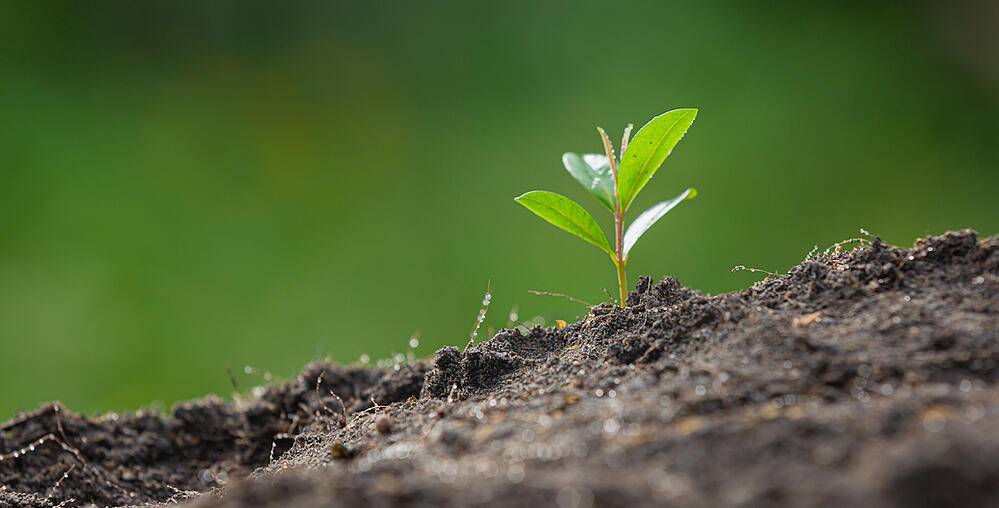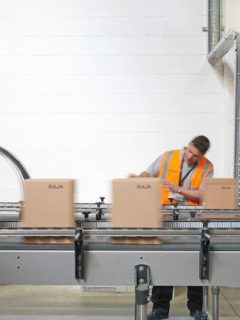L’éco-responsabilité est sur toutes les lèvres. Les pôles logistiques n’échappent d’ailleurs pas à la tendance : eux aussi ne cessent de réfléchir à la manière d’intégrer des pratiques et des outils plus respectueux de l’environnement à leurs process.
Et si les emballages biosourcés pouvaient participer à ces réflexions ?
Découvrez dans cet article les réponses aux 7 questions que vous vous posez sur les emballages biosourcés, et quelques bonnes pratiques pour tendre vers une stratégie d’emballage plus verte, mais toujours aussi performante.

Qu’est-ce qu’un emballage biosourcé ?
Un emballage biosourcé est un emballage conçu à partir de ressources renouvelables à l’échelle humaine. En ce sens, ils s’opposent aux emballages traditionnels que l’on connaît bien, et notamment ceux conçus à base de matières plastiques issues d’énergies fossiles non-renouvelables, comme les plastiques pétro-sourcés
(
- Starch, from maize, potatoes, wheat, rice or manioc
- Sugar, from sugar cane or sugar beet
- Cellulose, from wood or cotton
all of these materials make it possible to create polymers based on respect for the environment
| Good to know: A biobased packaging can be entirely or only partially biobased. |

Pourquoi vous intéresser aux emballages biosourcés dans votre logistique ?
Les emballages biosourcés sont au centre des discussions des pôles logistiques de nombreuses entreprises, car ils permettent de réduire leur impact environnemental dès leur conception. En réduisant l’utilisation de matière première non-renouvelables, et notamment le pétrole, utilisé dans la conception d’emballages en plastiques à usage unique, non-biosourcé), ils sont un véritable atout pour les stratégies RSE des entreprises.
Car vos clients attendent aujourd’hui de vous une véritable implication pour l’environnement et sa protection. On continue de voir, sur les réseaux sociaux, des consommateurs révoltés contre l’utilisation de plastique non-éco-responsable à outrance, dans des posts de plastic bashing qui peuvent nuire à votre image de marque.
D’ailleurs, selon une étude YouGov, 86% des consommateurs considèrent que les emballages sont un enjeuim
| Good to know: Biobased packaging is not necessarily compostable either. It will not necessarily be able to decompose naturally, with the help of bacteria or fungi naturally present in the environment, or in an industrial environment. However, some manufacturers offer packaging that combines biobased raw materials and composting: again, find out more. |
what industries can use bio-based packaging?
Historically, it has been mainly food companies that have looked into the use of bio-based packaging, but today all industries can find bio-based packaging to suit their needs. At RAJA, we are continuously working to provide our customers with packaging designed according to the latest environmental innovations, including bio-based packaging such as..
- Bags in rolls or straps made from biosourced plastic from corn starch, which are practical for retailers as well as for drive-through or click&collect deliveries
- Bags made from biobased cotton, which are clearly eco-responsible
- Biobasedcups, cutlery and crockery, particularly interesting for the food industry
- Corn starch cushioning particles, to replace bubble wrap, which has a reputation for being environmentally unfriendly
- Adhesive tape made from biobased kraft paper, to limit the use of plastic when sealing your packages..
how to use biobased packaging in your logistics strategy?
Choosing biobased packaging is not enough to meet the challenges of green logistics. It is a matter of applying a few good practices to make the most of this choice, and to really benefit from it. Consider, for example, the..
- Find effective biobased alternatives to your current packaging, which should protect your goods just as well and be adapted to the size of your products, to limit the empty space in your packages.
- Make sure that the biobased nature of the packaging is indicated on it, as well as the way the end customer should manage its end of life, so that your packaging will help educate your customers about eco-responsibility!
- Promote your use of “green” packaging on your marketing and communication materials. Highlight this change in practice on your website if you sell through a drive-through, e-commerce or click&collect; but also on your traditional materials (flyers, posters, etc.).
in short, your objective is to avoid completely overturning your current logistics processes, and to better communicate your commitment to the planet.
Are there other types of eco-responsible packaging?
Absolutely! If biosourced packaging is increasingly put forward as a good ecological alternative to traditional packaging, other types of eco-responsible packaging are also to be considered. You can in particular look into..
- Recyclable packaging, particularly practical to give an eco-responsible end of life to your packaging tools
- Packaging made from recycled materials, which contributes to the circular economy
- Compostable packaging, biosourced or not
- Reusable packagingespecially for your internal logistics
- Packaging that uses less raw materials in the packing phase..
and to go further, download the 5Rs guide: an effective method for finding eco-responsible packaging that meets your logistical needs















